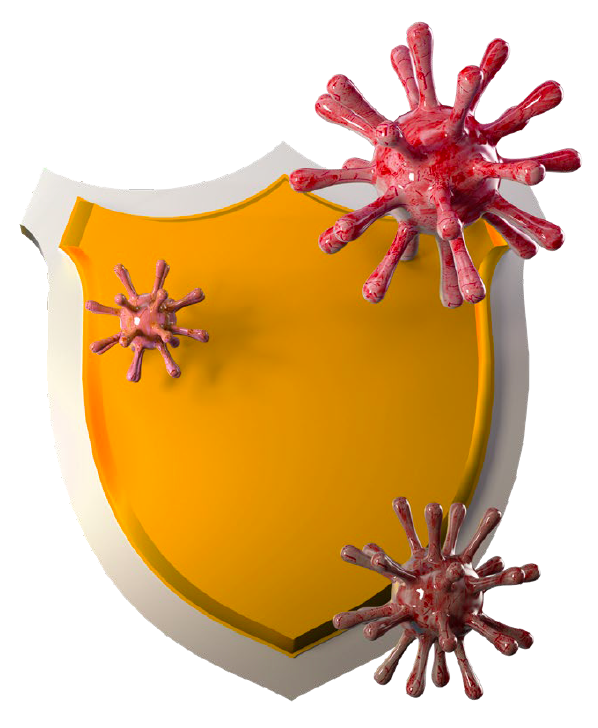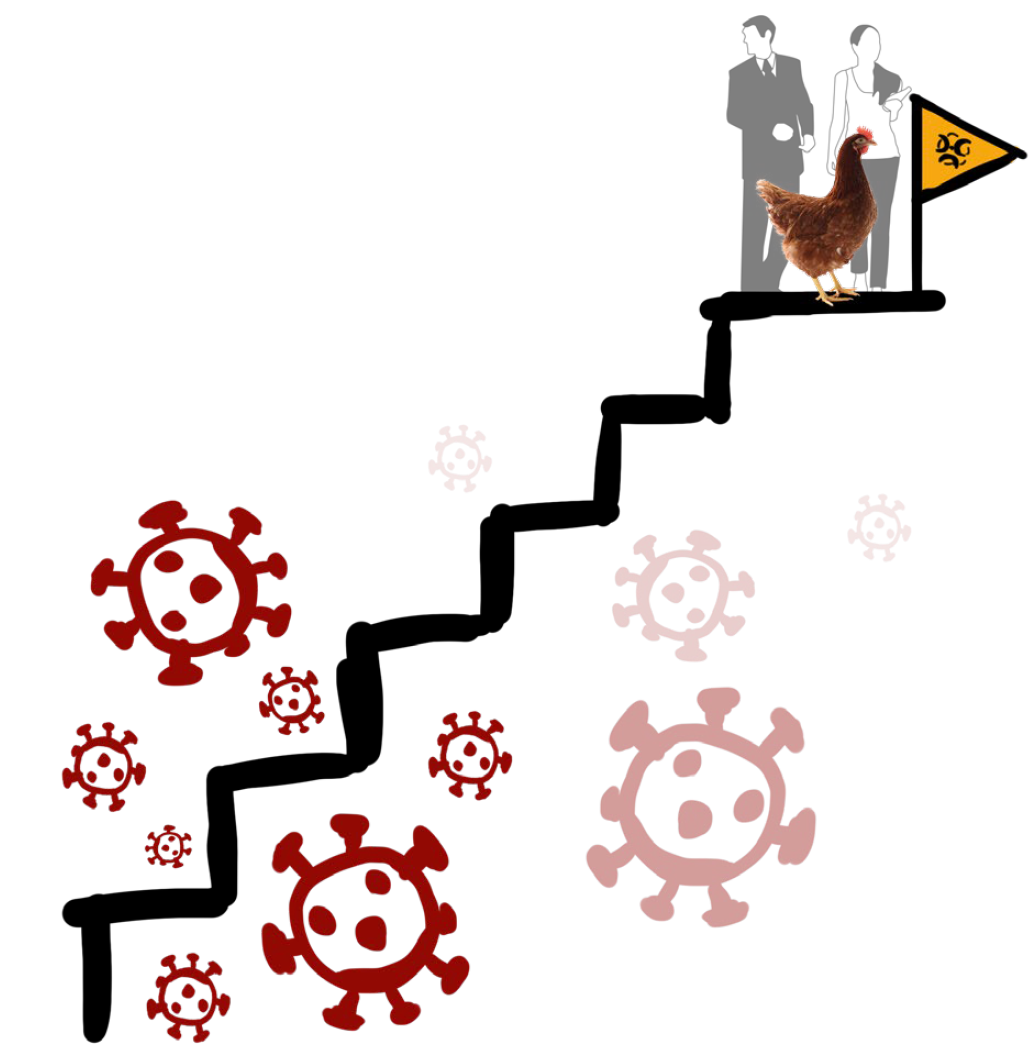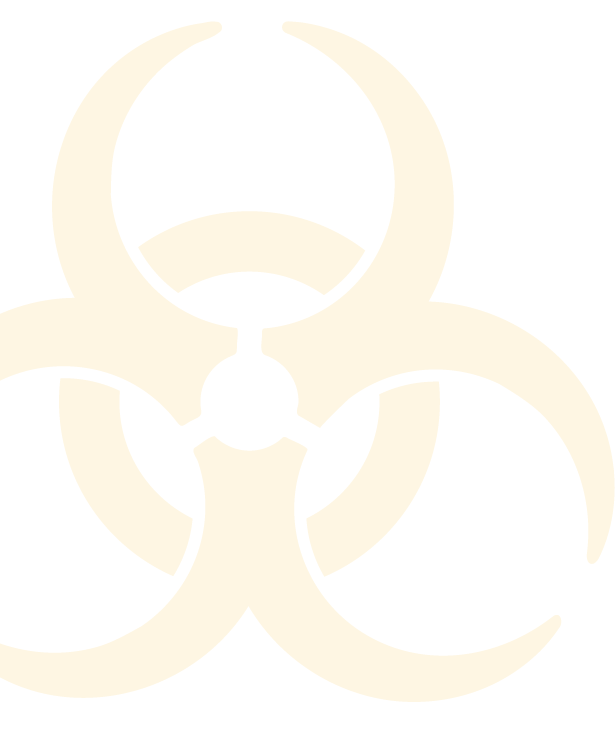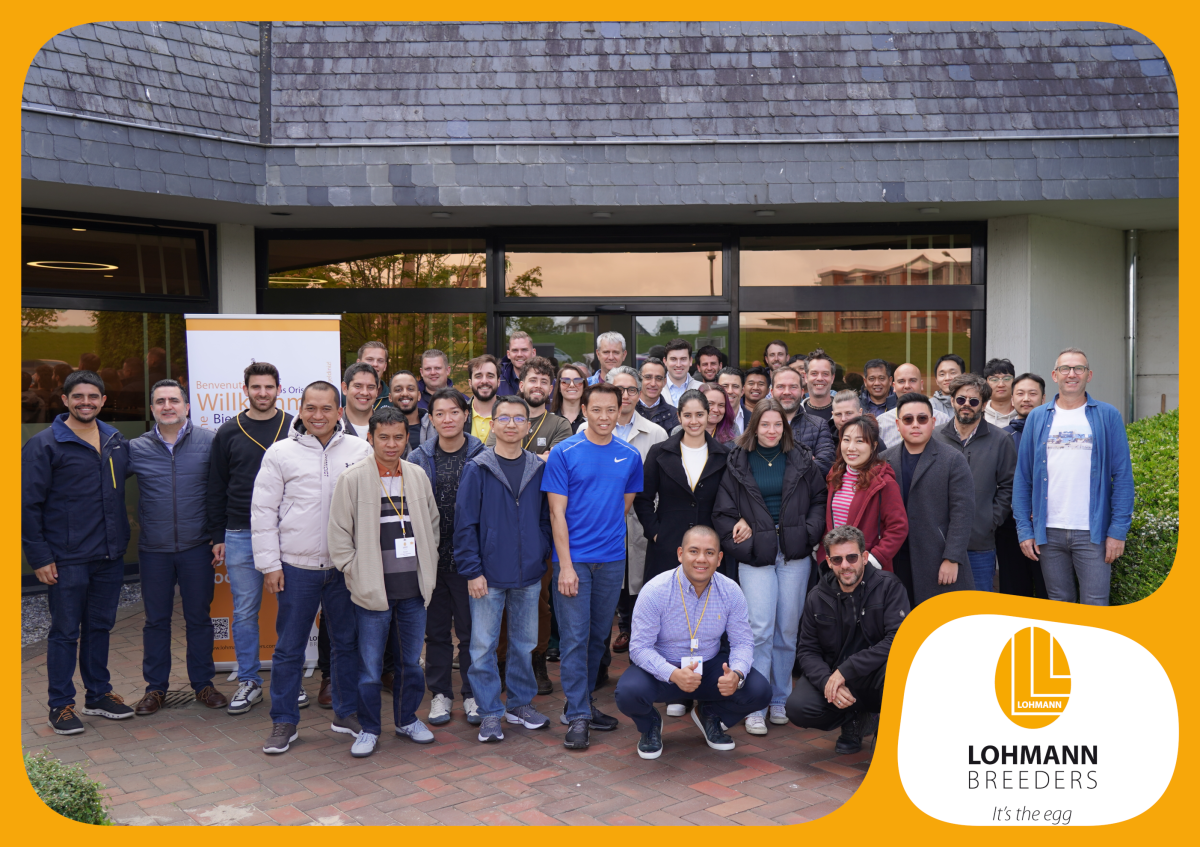The worldwide situation is in evolution, but outbreaks are declared in every continent according to the World Organisation of Animal Health (WOAH) website.
Visit website
This whole situation has led all stakeholders in the poultry sector to re-consider the strategy to fight this disease and now the two big topics are to wonder if vaccination against this virus has become a necessity where is not present and to build systems for early detection to prevent the spread of this disease.

The United States and some countries in Europe are in the discussion and recently the EU commission released legislation on vaccination against certain notifiable diseases including HPAI (EU Delegated REGULATION 2023/361).
Visit website
Let’s talk about BIOSECURITY
Why we consider biosecurity so important:
This measure has great importance now and will also be so in the next future.

 To summarize, the major principles of biosecurity are 3.
To summarize, the major principles of biosecurity are 3.
1
Remove organic material, clean with proper product and procedure is crucial to reduce the contamination.
The right procedure can be found in this article and using detergent and disinfectant in a proper way can make the difference.
FACT
The disinfectant usually has
a contact time measured in
minutes but usually we spent
only few seconds in contact
(foot bath). In the case we can
switch from liquid product
to dry bleach to improve this
situation.
CONTACT TIME.
2
The physical separation between dirty and clean area can make the difference.
Using the Danish entry, foot bath and washing the hands can multiply the chances to maintain out from our farm not only AI but also other pathogens (campylobacter, salmonella, mycoplasma, etc…)
FACT
The frequent measure failure
crossing dirty/clean area are
due to difficult to comply the
biosecurity protocol.
MAKE THING EASY.
3
The ability to maintain high and long-lasting compliance towards the measures described need education, training and trust and is the most complicated part.
The capacity to early detect issues with active surveillance and the rapid spread of information to the right people is crucial to contain the threat.
FACT
The key factors for success over
time according to experts are:
training, continuous feedback
and technological innovation.
GET-INVOLVED PEOPLE
Disclaimer
This TOOLBOX article remains the property of LOHMANN BREEDERS. You may not copy or distribute any portions of the article without the prior written consent of LOHMANN BREEDERS.
For more information and further toolbox articles, please visit our website www.lohmann-breeders.com or contact us directly:
LOHMANN BREEDERS GMBH
Am Seedeich 9 – 11
27472 Cuxhaven / Germany
E-mail: info@lohmann-breeders.com







 Veterinary
Veterinary 